News
How to Give First Aid to an Injured Bird?
Jan. 29, 2021
Birds usually have traumatic injuries, wounds caused by predators, or are wasted due to chronic illness. They are often accompanied by signs of dehydration and anorexia. An initial examination can help determine whether a bird needs first aid or euthanasia. Look for the type of bird, the type of wound (e.g. wing drop or inability to stand) and possible hazards to staff (beak, claws, etc.).
1. Appropriately sized cage or container - not too big or too small, well ventilated and without gaps that would allow the bird to escape.
2. Towels of various sizes - for holding the bird and for bedding.
3. Something that provides heat - use a heating pad, room heater, intensive care unit (incubator, humidifier) or reptile feeder with heat lamp to provide heat.
4. Local veterinary clinic contact details and address.
5. Contact details and address of local bird (or wildlife) rescue centre.
Syringes (various sizes), feeding tubes, sterile fluids (0.9% saline ampoules), carprofen injection, water-based gels (K-Y gels), sterile low-adhesive dressings, sterile gauze pads, self-adhesive bandages, Micropore brand tape, oral electrolyte supplements, paper towels, disposable gloves.

Handling
To stabilise the bird before handling it, use a towel or facecloth to restrict the bird's movement and hold the lower beak with your index finger and thumb while wrapping the towel around the wing and leg as you would a shawl. Do not squeeze into the bird's chest, it needs to rely on the intercostal muscles to breathe. All operations need to be carried out in a room away from dogs and cats.
Checking
Remember that as a prey species, birds have strong protective reflexes and a bird that looks normal may be very ill. If no serious trauma is evident, try to get the bird to walk or fly in a safe room. Perceive weight and body condition by touching the muscles on either side of the keel. If the keel is protruding, it is in poor condition and has very little muscle. When the bird is anaesthetised, check for symmetry of length along the wings and sides of the legs.
Skin: Check for wounds and for the presence of mixed feathers, food pellets (small balls of material that the bird spits out containing indigestible parts of the food - translator's note) or pus. Check for wrinkled feathers and missing tail feathers.
Beak: check for blood, erosions or parasites. Check nostrils and eyes for bleeding.
Feces: White or cream coloured uric acid is normal. Yellow uric acid may be caused by starvation. Yellow/green uric acid may be caused by liver disease or haemorrhage after trauma. Stressed birds often pass large amounts of urine, but this may also be caused by kidney disease.
The above information is provided by the carprofen injection supplier.





